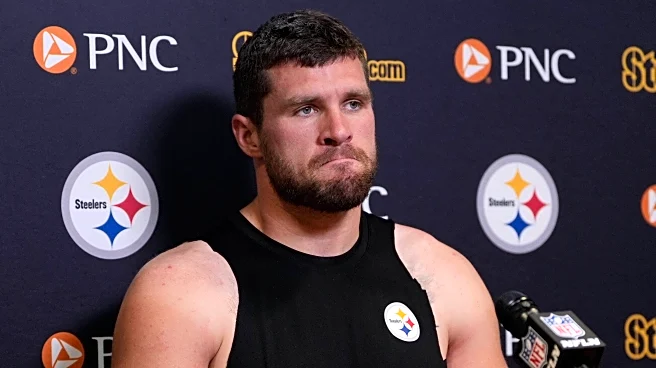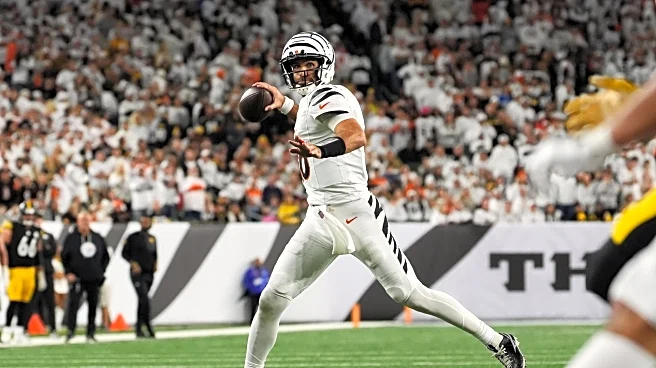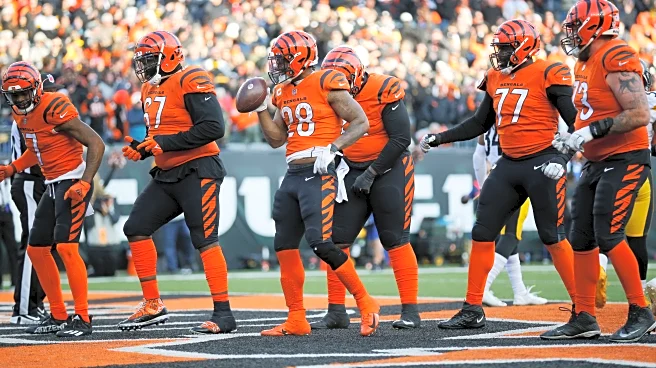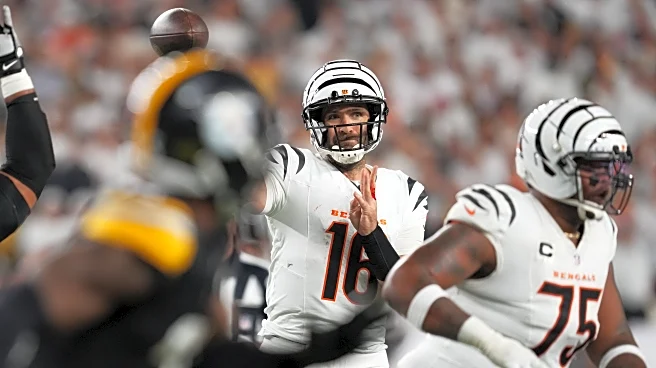What's Happening?
Joe Flacco, a veteran quarterback, has found a new home with the Cincinnati Bengals after being traded from the Cleveland Browns. In his second start for the Bengals, Flacco led the team to a 33-31 victory
against the Pittsburgh Steelers, ending a four-game losing streak. Flacco completed 31 of 47 passes for 342 yards and three touchdowns, providing a much-needed boost to the Bengals' offense in the absence of Joe Burrow, who is sidelined with an injury. Flacco's performance has quickly endeared him to Bengals fans, who once viewed him as a rival during his tenure with the Baltimore Ravens.
Why It's Important?
Flacco's successful integration into the Bengals' lineup is significant for the team as they aim to remain competitive in the AFC North. His ability to lead the team to victory against a division rival highlights his experience and skill, which could be crucial for the Bengals as they navigate the season without their starting quarterback, Joe Burrow. The win not only boosts team morale but also keeps the Bengals in contention for a playoff spot. Flacco's presence has also fostered unity within the team, as noted by kicker Evan McPherson, who praised Flacco's leadership and ability to connect with teammates quickly.
What's Next?
The Bengals will look to build on their recent victory as they continue their season. With Flacco at the helm, the team hopes to maintain their momentum and secure more wins to improve their standing in the AFC North. The chemistry between Flacco and key players like Ja'Marr Chase and Tee Higgins will be crucial in upcoming games. As the team adapts to Flacco's leadership style, they will aim to capitalize on his veteran experience to navigate the challenges posed by their remaining schedule.
Beyond the Headlines
Flacco's journey from being a rival to becoming a key player for the Bengals underscores the unpredictable nature of professional sports careers. His ability to adapt and thrive in a new environment highlights the importance of resilience and adaptability for athletes. This transition also reflects broader themes of redemption and second chances in sports, where players can redefine their legacy and impact through new opportunities.













